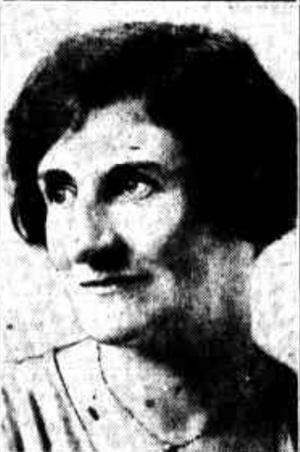Dora Wilson facts for kids
Dora Lynnell Wilson was an amazing artist. She was born in Britain in 1883 and later moved to Australia. She became famous for her detailed etchings and paintings of city streets. She lived from August 31, 1883, to November 21, 1946.
Early Life
Dora Lynnell Wilson was born in Newcastle upon Tyne, England, in 1883. Her family moved to Victoria, Australia, in 1884 when she was just one year old.
Education and Friends
Dora went to school at Somerset School and Methodist Ladies' College in Melbourne. From 1901 to 1906, she studied art at the National Gallery. Her teachers were Bernard Hall and Frederick McCubbin. During this time, she made friends with other artists like Ruth Hollick, Gwendolyn Grant, Norah Gurdon, and Pegg Clarke. She also took lessons from John Mather with Jessie Traill and Janie Wilkinson Whyte.
Artistic Career
Dora Wilson's artwork was often praised for its "strong sense of colour." However, some people thought it looked a bit too "pretty."
Her art was shown in many important exhibitions. These included the Australian Exhibition of Women's Work in Melbourne and an Australian art show at the Royal Academy in London. In 1923, one of her paintings, 'Reve d'Or', was even featured on the cover of Women's World magazine. It was also shown in Paris at the Société des Artistes Français.
Dora had her own art studio on Collins Street West. It became a popular meeting spot for former students from the National Gallery art school. These artists formed a group called 'The Twelve Melbourne Painters' and held exhibitions in 1913–14. Famous artists like Jessie Traill, Janet Cumbrae Stewart, Norah Gurdon, Penleigh Boyd, and Lindsay Bernard Hall were part of this group. Dora was also a member of the Melbourne Society of Women Painters and Sculptors.
From the 1920s, Dora mostly painted street scenes. In 1923, a person named Sir Baldwin Spencer asked her to paint famous places in Europe. She traveled around Europe for more than two years with the photographer Pegg Clarke. In 1928, these paintings were shown at the Beaux Arts Gallery in London. The next year, they were exhibited at Australia House.
In the early 1930s, Dora focused on historical scenes from Melbourne. She had an exhibition called 'Milestones of Melbourne' in 1935. The famous artist Arthur Streeton liked her work, saying it was "fresh in colour" and "free from the depressing appearance of black paint." In 1937, she joined and exhibited with the Australian Academy of Art.
Later Life and Legacy
Dora Wilson passed away from cancer on November 21, 1946, in Melbourne. She left £1100 to the National Gallery trustees. She wanted this money to help other Australian artists travel and study art abroad.
Images for kids





